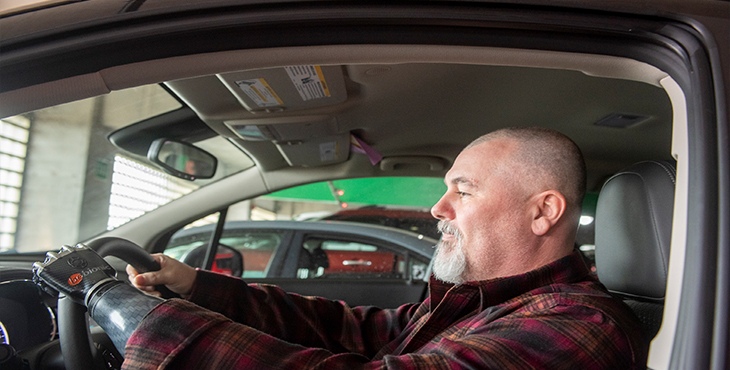A recent study found similar levels of satisfaction among Veteran users of upper-limb prostheses regardless of which type of device they use.
The results appeared online in the journal Prosthetics and Orthotics International in January 2020.
In a survey of more than 400 Veterans, the researchers found little difference in satisfaction, at the group level, among users of myoelectric, body-powered, and cosmetic prostheses. Overall across the three groups, the average rankings fell just shy of “satisfied.”
Types of upper-limb devices
A myoelectric prosthesis is an externally powered artificial limb that is controlled with electrical signals generated by one’s muscles. The device can replace missing hands, elbows and shoulders, depending on the level of amputation. The most advanced experimental systems can transmit sensation back to the user in the case of fingers and touch, a feature that is not available in commercial devices.
“Many people have expectations about what these devices should do that just aren’t being met.” – Dr. Linda Resnick
A body-powered device is operated by a cable. Movement of another part of the body, such as the shoulder blades, pulls the cable open and controls the limb.
Cosmetic prostheses are used by upper- and lower-limb amputees for appearance purposes. Older designs are often a kind of vinyl, while more recent ones are made from urethanes and silicones that closely reflect the appearance of the natural limb.
No differences based on hand type, either
The researchers also observed no satisfaction difference based on the type of terminal device, which is the prosthetic hook or hand. The most commonly used prostheses have hooks or hands that open and close in one position. Advanced prosthetic hands with multiple degrees of freedom allow the user to move the hand into different grasping positions.
Dr. Linda Resnik of the Providence VA Medical Center led the study. She and her colleagues expected to see greater satisfaction with people using myoelectric devices that provide multiple degrees of freedom. She was thus surprised to find no difference in prosthesis satisfaction.
‘The latest and greatest devices’
“I thought that people who got the newest and the latest and greatest devices that offer multiple degrees of freedom would be happier with them,” says Resnik, who is also affiliated with Brown University in Rhode Island. “There could be many reasons we didn’t find that. These devices are known to be more fragile. The more mechanically complicated devices are, the more places they can break. So they may end up being in the shop more. Many people have expectations about what these devices should do that just aren’t being met.”
Resnik and her team also aimed to identify factors linked to prosthesis satisfaction. They found that initial prosthetic training was associated with greater happiness, pointing to the “critical role of occupational or physical therapy in the early stages of prosthetic care.”
To read more about the study, visit VA Research Currents.
In the photo above, Army Veteran Robert Lewis, wearing a myoelectric arm, operates his vehicle in a parking lot at the VA Pittsburgh Healthcare System. To read more of Lewis’ story, visit VA Research Currents. (Photo by Bill George)
Topics in this story
More Stories
Diverse representation of women in health care research allows MVP to make discoveries for women’s health
Join the Million Veteran Program online. You will have the option to receive an at-home blood sample collection kit in the mail.
VHA's new podcast series, New Horizons in Health, features a candid discussion of psychedelic assisted therapies for Veterans experiencing mental health conditions.







What about Lower prosthetics? I have tried to get one to fit for 9 years now!!!!!